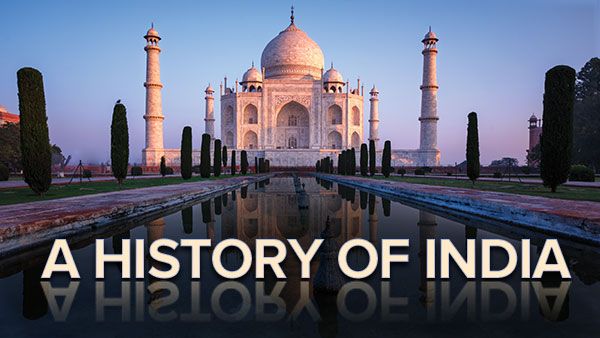 |
| Image source - by google - Michael H. Fisher |
Introduction of History
The study of past is called
History.
The word history is
derived from the Greek word 'HISTORIA' meaning "RESEREACH".
The
Greek historian Herodotus was the first real historian of the world and the
father of history. He wrote only one book 'The Histories'.
The
German historian Leoplod Von Ranke is known as the father of modern
history.
Indian History
Indian
history was divided in three parts:
1.
Ancient India
(the beginning-647AD)
2.
Medieval India (647-1757)
3.
Modern India (1757-till
date)
Ancient India
1.
Pre-Historic period
2.
Indus Civilization
3.
Vedic culture
4.
Mahajanapada period
5.
Maurya period
6.
Post Maurya/Pre-Gupta period
7.
Gupta period
8.
Post-Gupta period/Vardhana Dynasty.
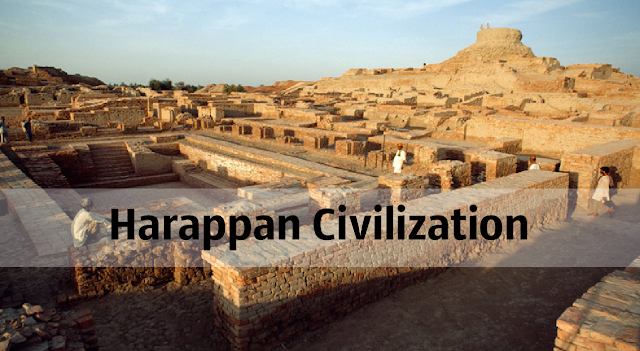 | |
|
Oldest name of Harappan
Civilization is Indus Valley Civilization. It is found in 2500
BC-1750 BC. John Marshall was
the first scholar to use the term 'Indus Civilization'.
Mohenjodaro was the biggest site of Harappan Civilization and
also capital of Harappa.
Mohenjodaro was founded by Rakhal Das Bannerji (in 1922).
Some
others sites are:
·
Chanhudaro
·
Kalibanga
·
Banawali
·
Dholavira
Port
cities are:
1. Lothal
2. Balakot
3. Kuntasi
4. Allahdino
Some
common features of major cities:
« Systematic town planning on
the link of grid system
« Use of burnt bricks in
construction
« Underground drainage system
« Fortified citadel
Main
crops of Indus Valley Civilizations are: Wheat and Barley; Evidence of
cultivation of rice in Lothal and Rangpur.
Animal:
Sheep, goat, dog, cat etc.
Lion
was not known to Indus people.
Vedic culture
There are 4
Vedic gods Indra, Varuna,
Mitra and Nasatyas, proved Central Asian theory as their homeland. The
group that came India and first settled down in Punjab called Sapta Sindhu(region of seven rivers). They
lived here for many centuries and settle in the valleys of Ganga and Yamuna.
Vedic
literature
The Rig
Veda was composed while the Aryans were still in Punjab. There are total four Vedic
literature:
1. Vedas
2. The Brahmanas
3. The Aranyakas
4. The Upanishads
Vedic
literature had grown up in course of time and was really handed down from
generation to generation from mouth. These are called Shruti. The
important Vedic literatures are Vedas. Vedas are not created by man or
woman but god gifted.
There are
total four Vedas:
1. Rig veda
2.Yajur veda
3. Sama veda
4. Atharva veda
The Rig
Veda is oldest text in the world and it is also known as the first testament of mankind. The
Rig Veda contains 1028 Hyms and 10580 verses, divided into 10 Mandals.
The Yajur
Veda is a ritual Veda. It is divided into two parts:
·
Krishna Yajur Veda
·
Shukla Yajur veda
The Sama Veda had 1549 verses. All verses are taken from Rig Veda.
This Veda is important for Indian music.
The
Atharva Veda contains, charms and spells to ward of evils and diseases. For
a very long time it was not included in the category of the Vedas.
 | |
|
Buddhism
Buddha's life
Founder
of Buddhism, Gautama Buddha was born in 563 BC at Lumbini, Rummindehi
district Nepal in the Sakya clan. His father Suddhodhana was the king of
Sakya clan and his mother Mahamaya was a princess of Kollia. After his
mother early death his was took take by his foster mother and aunt Mahaprajapati
Gautami. Gautama father married him at an early age to Yasodhara from whom
he had a son named Rahul.
Once
he gone for a walk in chariot he saw an old man, a diseased person, a dead body
and a ascetic. This is proved to be a turning point in his life.
His
first teacher was Alara kalama from whom he learnt the technique of meditation.
His second teacher was Udraka ramputra.
At
age of 35, under a Pipal tree in Bodh Gaya on the bank of river he attained
enlightenment after 49 days of continuous meditation now he has fully
enlightened. Buddha delivered his first sermon in Sarnath in a public park to
his disciples, this sermon is known as Turning of the wheel of law.
He
died at the age of 80 at Kushinagar, district of U.P. this is known as final
blowing out.
Buddhist council:
- First buddhist council organized by Ajatashatru in 483 BC at Rajgriha.
- Second buddhist council were organized by Kalashoka in 383 BC at Vaishali.
- Third buddhist council were organized by Ashoka in 250 BC at Patliputra.
- Forth buddhist council were organized by Kanishka in 98 AD at Kashmir.
Pali text:
Tripitaka: Pitaka literally means
'basket' and it was called so, because the original text written on palm leaves
and kept in basket.
- Sutta Pitaka— Buddha's saying
- Abhidhamma
Pitaka— religious
discourses of Buddha
- Vinay Pitaka— monastic code
Buddhist Universities
|
Place
|
Founder
|
Nalanda
|
Bihar
|
Kumargupta I
|
Jagadal
|
Bengal
|
Ramapala
|
Vallabhi
|
Gujarat
|
Bhattarka
|
Somapuri
|
North Bengal
|
Dharmapala
|
Vikramshila
|
Bihar
|
Dharmapala
|
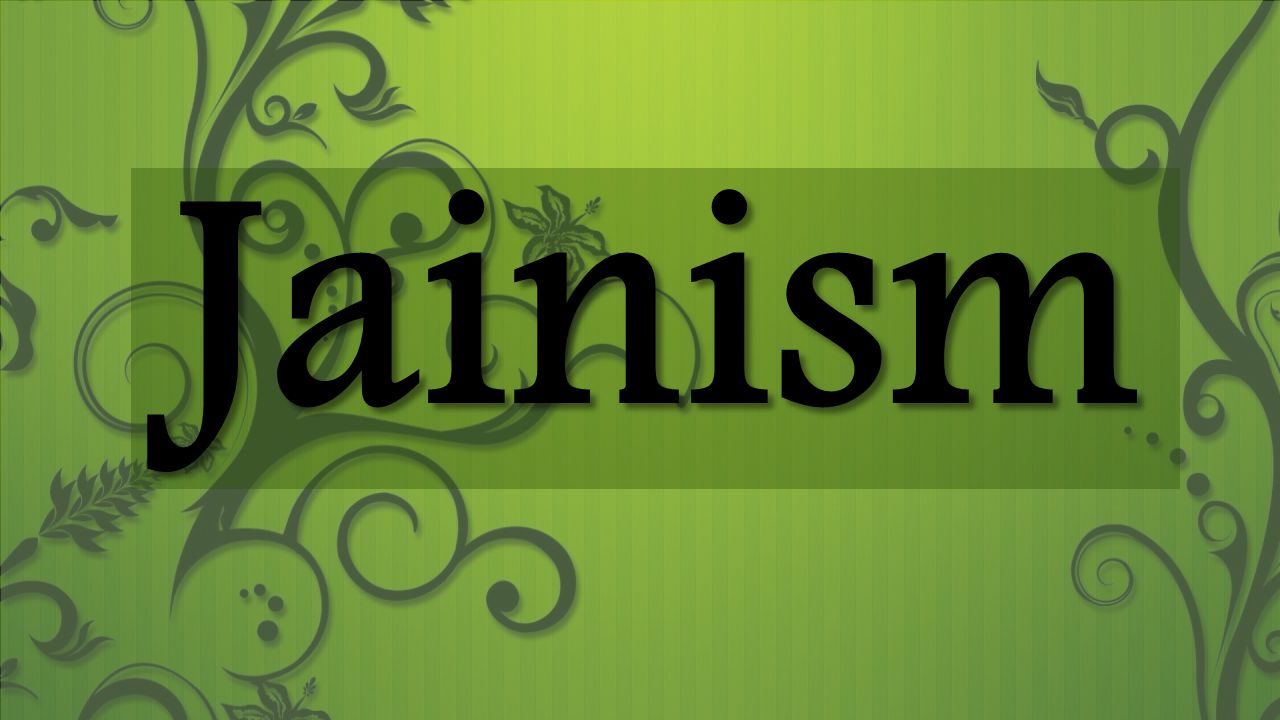 | |
|
In Jainism
there are 24 Thirthankaras (teachers) the first were Rishabha and the last were
Mahavira. Sacred books of Hindu Vishnu purana and Bhagavat describe Rishabha as
an incarnation of Narayana. Oldest text of india Rig veda had also mention name
of two Thirthankaras Rishabha and Arishtanemi. History found 22 thirthankaras
are important but we don't have any hard proof about their life. We have historical
proof of only last two Thirthankaras Parshwanath he were 23th Thirthankara and
Mahavira he were 24th and last Thirthanakar of jain tradition.
Parshwanath
was a prince of Banaras who reject the throne and spent their life in a simple
way and died at Parasanth Hill, Giridh, Jharkhand. Parshwanath's main teaching
were:
- Ahimsa (non-injury)
- Aparigraha (non-possession)
- Asteya (non-stealing)
- Satya (non-lying)
- Brahmacharya (chastity)
Some Thirthankaras and their symbols
Name
|
Symbols
|
Rishabha
|
Bull
|
Ajinath
|
Elephant
|
Arishtanemi
|
Conch shell
|
Parshwanath
|
Serpent
|
Mahavira
|
Lion
|
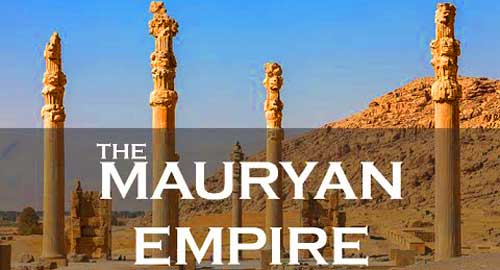 | |
|
Maurya Period (322 BC - 185 BC)
First we
had to see some sources from which History of Mauryan Empire was found.
- Kautilya's
Arthasastra: It is important
literary source for the Mauryas. It gives a clear and methodological analysis
of political and economic conditions of the Mauryan period.
- Megasthaenese's
Indica: Megasthaenese was the ambassador of Selecus Nikator in the court of
Chandragupta Maurya. His Indica is foremost among all foreigner’s accounts for
Maurya. But its original copy was lost , and it has survived only as quotations
in the text of classical Greek writers, such as Strabo, Arrian and Latin
writers such as Pliny and Justin.
- Puranas: through they are a collection of legends interspread
with religious teaching, they give us the chronology and lists of mauryan
kings.
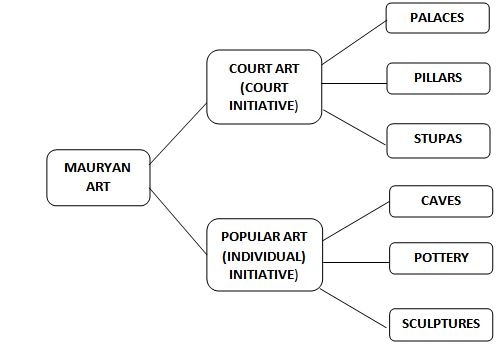
Chandragupta Maurya : 322 BC - 298 BC
Chandragupta
dethroned the last Nanda ruler Dhananand and occupied Patliputra in 322 BC with
the help of Kautilya (Chanakya). In 305 BC, Chandragupta Maurya defeated
Selecus Nikator, who surrendered a vast territory including Aria in return for
500 elephants. Under Chandragupta Maurya, for the first time, the whole of
Northern India was united. Megasthenese was a Greek ambassador sent to the
court of Chandragupta Maurya by Selecus Nikator.
Bindusara : 298 BC - 273 BC
Chandragupta
Maurya was succeeded by his son Bindusara. Bindusara, known to the Greeks as
Amitrochates, is said to have carried his arms to the Deccan.
Bindusara
asked Antiochus 1st of Syria to send some sweet wine, dried figs and a sophist.
Anitiochus politely replied that Greek philosphers are not for sale. Bindusara
patronised Ajivikas.
 | |
|
Ashoka the
son of Bindusara, was born his mother happy to have a child said now I am
Ashoka (without sorrow) And so the child was named Ashoka.
According
to Buddhist tradition, Ashoka upsurged the throne after killing his 99 brothers
and spared Tissa the youngest brother. Radhagupta a minister of Bindusara
helped him in fratricidal struggle. This war of succession accounts for
interregnum of four years and only after securing his position on the throne,
Ashoka himself crowned in 269 BC. Ashoka fought the Kalinga war in 261 BC in
9th year of his coronation. The king was moved by massacre in this war and
therefore abandoned the policy of physical occupation in favour of policy of
cultural conquest. In other words, Bherighosa was replaced by Dhammaghosa.
Gupta
Period (319 AD - 540 AD)
Around 4th
century AD a new dynasty came into existences, Gupta dynasty, in Magadha and
established a vast empire over the great part of northern India. They rule
lasted more than 200 years. Gupta period refers as the 'classical or golden
age' in Indian history and most rich era of Indian history. Many evidences were
found in which we know the founder of dynasty was a person named Gupta. He used
the simple title of maharaja. Gupta was succeeded by his son Ghatotkach.
Chandragupta
1: 319-334 AD
He was the
first Gupta ruler who used the title of Maharaja Dhiraja. His kingdom were very
powerful. He strength then there kingdom by making relations with other powerful
rulers at that age for example he marry Lichchhvi princess Kumaradevi, his
decision to marry Kumaradevi gave him profit she brought to him enormous power,
resources and prestige. He take advantage of this power and occupied whole
gangtic valley and there fertile lands in control.
Samundragupta:
335-380 AD
Next ruler of Gupta empire was Samundragupta. He was a great conqueror as mention in
Prayaga Prasasti or Allahabad pillar which is composed by Harisena the court
poet of Samundra Gupta. Historian gave him title of Indian Napolean. Samundragupta was a big
Vaishnavite. Only Gupta has the title of Sarva-Raj-Ochehhtetta.
Chandragupta 2 ( Vikramaditya): 380-441 AD
According
to some sources Samundragupta was succeeded by Ramgupta. Ramgupta ruled for
very short period. He was very coward successor in the Gupta dynasty. He was
agreed to surrender his queen Dhruvadevi to Saka invaders. But the prince
Chandragupta save her for the hands of enemy by killing them and after that he
succeeded the throne by killing Ramgupta and also marred his widow wife
Dhruvadevi.
Navaratna
in Chandragupta 2 court:
- Amarsinh
- Shanku
- Velabhatt
- Ghatakarna
- Varahmihira
- Dhanavantri
- Araruchi
- Kalidas
- Kshapranak
Kumaragupta
1: 415-455 AD: Chandragupta
2 was succeeded by his son Kumaragupta-1. He founded Nalanda Mahavihara which becomes a great centre of learning. Kumaragupta was the worshipper of Shiva's
son god Kartikeya.
Skandagupta: 455-467 AD: He was the last ruler of Gupta dynasty. During his region Gupta empire were raided by Huns. He defeated the Huns. Success in repelling the Huns seems to have been celebrated by the assumption to the title 'Vikramaditya'. By continuous raid of Huns make Gupta economy very bad.
Skandagupta: 455-467 AD: He was the last ruler of Gupta dynasty. During his region Gupta empire were raided by Huns. He defeated the Huns. Success in repelling the Huns seems to have been celebrated by the assumption to the title 'Vikramaditya'. By continuous raid of Huns make Gupta economy very bad.
Post Gupta Period / Vardhana dynasty (550-647 AD): The vardhana dynasty was founded by Pushyabhuti at Thaneswar towards the begginning of the 6th century. Pushyabhuti were came under the Guptas but after invasion of Huns they felt themselves independent. The first important ruler of the dynasty was Prabhakaravardhana (560-605 AD). After Prabhakaravardhana his elder son Rajyavardhana succeeded the throne. Rajyavardhana faced many problems from Grahavarman, ruler of Kannauj and husband of their sister(Rajyashri). Shashanka ruler of north-western bengal occupied kannauj and imprisoned Rajyashri.
Harshavardhana (606-647 AD)Harshavardhana succeeded the throne of Pushyabhuti after killing Rajavardhana in 606 AD and this year started the Harsha Era mention in historical texts. Harsha won back Kannauj from Shashanka who had occupied kannauj after killing Rayavardhana. He made Kannauj new capital and become most powerful king in the north india. Harshavardhana defeated Dhruvasena 2nd ruler of Vallabhi. In order to secure the safety of western boundary he married daughter of Dhruvasena 2nd. Now Dhruvasena accepted his authority in his kingdom it was an great and diplomatic achievement for Harvardhana. He died in 647 AD. Harsha wrote three books:
- Ratnavali
- Nagananda
- Priyadarshika
- Banabhatta the author of Harshacharitra wrote in his book about historical dates and important events in Harsha life.
Very informative, and rather long form. Rich content!
ReplyDeleteVery nicely written. Specially the vedic culture.
ReplyDeleteu are doing great work, my best wishes is always with u
ReplyDeleteVery informative content
ReplyDeleteNice articl..
ReplyDeleteGreat information, keep it up #sheetaluwach
ReplyDeleteInformative article
ReplyDeleteI love your content
ReplyDeleteToo good
ReplyDeleteNice!
ReplyDeletevery informative article about historical civilizations.
ReplyDeleteVery informative, keep it up #sheetaluwach
ReplyDeleteAmazing
ReplyDeleteSuperb
ReplyDeleteToo informative
ReplyDeleteVery detailed article. Thank you!
ReplyDeleteVery good article please visit https://www.yourfitnessrink.com
ReplyDeleteAmazing blog .you explain in detail i like it
ReplyDeleteAstonish work author
ReplyDelete